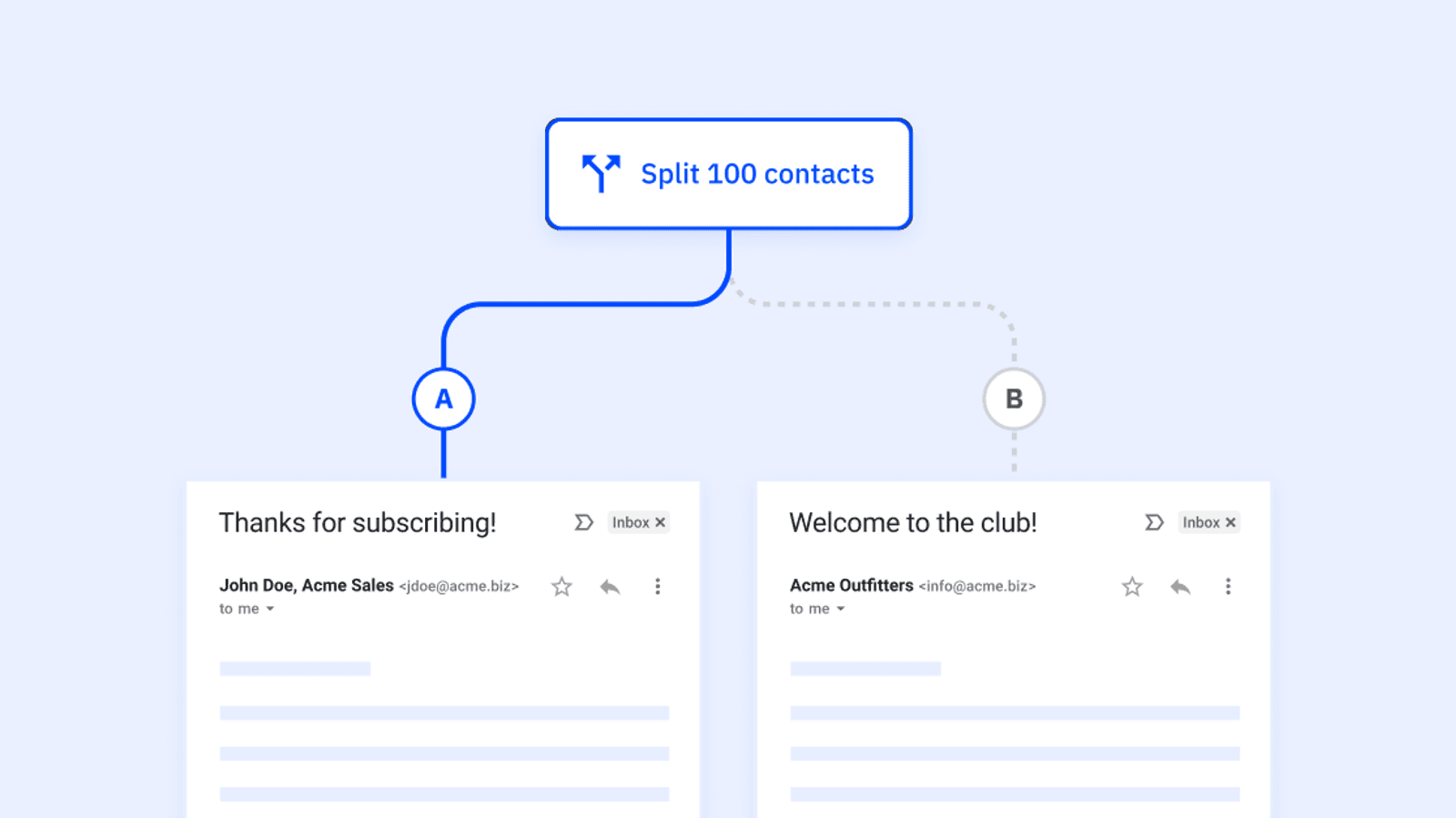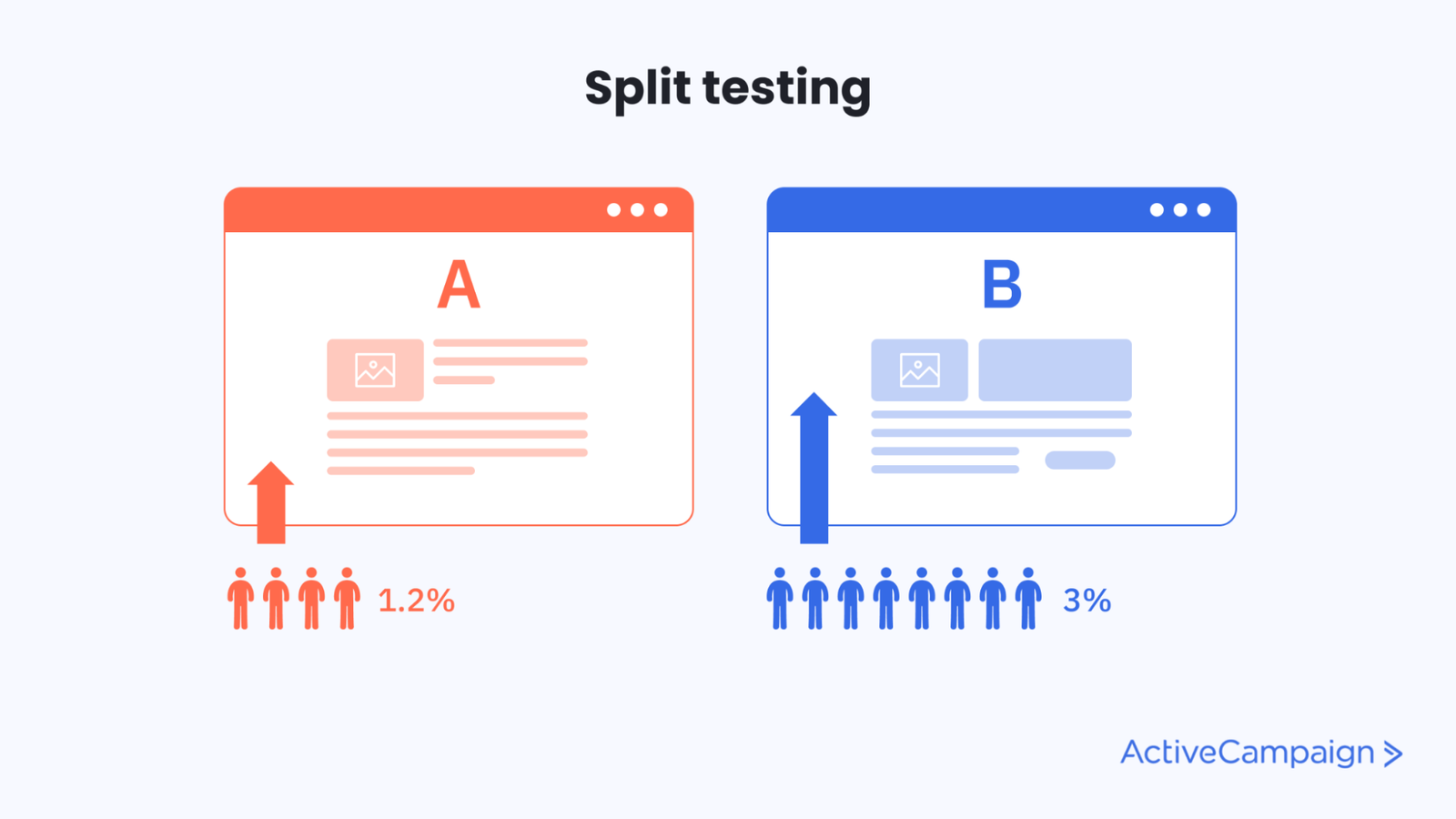You’re collecting data from every marketing channel—email, social media, ads, and website. But are you using it to drive better decisions? Marketing analytics isn’t just about tracking opens, clicks, and conversions—it’s about understanding what’s working, what’s not, and how to turn insights into action.
Too often, marketers get stuck measuring surface-level metrics without knowing how to apply them. That’s where a smarter approach to marketing analytics comes in. Instead of just reporting on past performance, modern marketing analytics helps you predict trends, optimize marketing campaigns in real-time, and directly tie efforts to revenue.
What is marketing analytics?
Marketing analytics is the process of measuring, analyzing, and interpreting marketing data to understand what’s working and what isn’t. It goes beyond tracking clicks and conversions; it helps you connect the dots between customer behavior, campaign performance, and revenue impact.
Marketing analytics is about making data-driven decisions. By digging into your numbers, you can:
- Identify trends in customer engagement and buying patterns
- Measure the effectiveness of campaigns across email, social media, ads, etc.
- Pinpoint which marketing efforts drive the highest ROI
- Optimize future campaigns based on real insights
When used effectively, marketing analytics turns raw data into actionable insights. This helps you fine-tune your strategy, allocate budget wisely, and create more personalized experiences that drive results.
How does marketing analytics work?
Marketing analytics follows a four-step process that helps you collect, interpret, and apply insights to improve your digital marketing strategy.
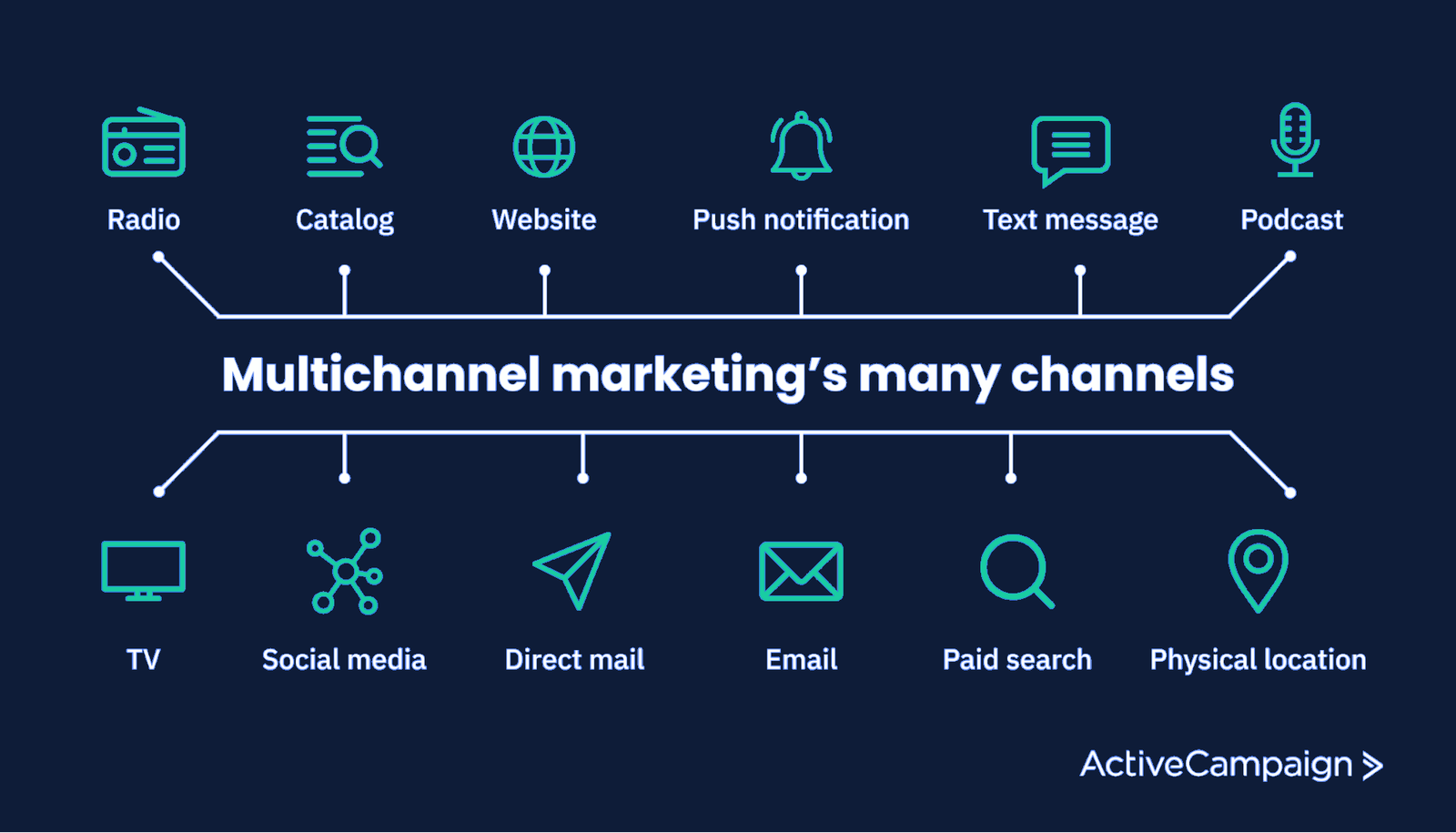
Collecting data from multiple channels will result in higher quality data.
Data collection
Before you can analyze anything, you need reliable data. Marketing analytics tools pull in data from multiple sources, including:
- Website activity (page views, time on site, bounce rates)
- Email performance (opens, clicks, conversions)
- Social media engagement (likes, shares, comments)
- Paid ad metrics (CTR, cost per conversion)
- Customer interactions across multiple touchpoints, including blog, pricing pages, feature pages, and more
The more accurate and unified your data collection, the better your insights will be.
Analysis
Once the data is collected, analysis helps uncover patterns and trends. This stage answers key questions like:
- Which channels drive the most engagement?
- What messaging resonates with your audience?
- Where are potential customers dropping off?
- How do different marketing efforts impact revenue?
With AI and automation, and principles borrowed from data science, data analytics tools can go beyond manual number-crunching to predict future trends and suggest optimizations.
Reporting
Raw data doesn’t mean much unless it’s organized and visualized. Dashboards and reports help turn complex numbers into clear insights, making it easier to:
- Track performance across multiple marketing channels
- Measure return on investment (ROI) and campaign effectiveness
- Spot trends over time
- Share insights with stakeholders
Customizable reports let you focus on the metrics that matter instead of drowning in data.
Actioning insights
This is where marketing analytics becomes truly valuable: turning insights into action. Instead of just reviewing past performance, you can:
- Optimize email subject lines based on open rate data
- Adjust ad spend toward the highest-converting channels
- Refine audience targeting based on customer behavior
- Automate follow-ups when leads engage with content
The best marketing analytics tools don’t just track numbers, they help you take the right next step to improve results.
Why is marketing analytics important?
Marketing analytics isn’t just about tracking performance, it’s about making smarter, data-backed decisions that drive real business growth. When you understand what’s working and what’s not, you can double down on successful strategies and cut what isn’t delivering results.
Directly impacts revenue
Marketing analytics gives you a direct line to ROI by revealing which channels, campaigns, and customer segments generate the most revenue. Instead of relying on assumptions, you can:
- Identify your highest-converting marketing efforts and scale them.
- Optimize underperforming campaigns by tweaking messaging, timing, or audience targeting.
- Track customer lifetime value (LTV) to ensure long-term profitability, not just quick wins.
Without marketing analytics, it’s easy to waste budget on efforts that don’t move the needle.
Scales alongside growth
The power of marketing analytics grows as your business evolves. It starts with basic performance tracking, but as your strategy matures, analytics can:
- Predict future trends with AI-driven insights, helping you stay ahead of changing customer behaviors.
- Enable real-time personalization by tracking individual user actions across channels.
- Automate campaign optimizations so your marketing becomes smarter and more efficient over time.
- Help you dynamically test and refine marketing strategies instead of waiting for end-of-quarter reports.
6 ways to harness marketing analytics for better results
Understanding key insights and taking actionable steps can turn raw numbers into a roadmap for success. Here’s how to make marketing analytics work for you.
1. Define clear goals and KPIs
Without clear goals, marketing analytics is just numbers on a dashboard. You need specific, measurable benchmarks to gauge success and adjust your strategy. That’s where SMART goals come in—ensuring your objectives are specific, measurable, achievable, relevant, and time-bound.
For example:
Instead of saying, “We want more leads,” a SMART goal would be: “Increase lead conversions by 15% over the next three months by optimizing landing page CTAs and refining audience targeting.”
Key performance indicators (KPIs) help track progress toward these goals. Some of the most valuable marketing campaign KPIs include:
- Conversion rate: The percentage of users who take a desired action (e.g., signing up, purchasing, downloading).
- Customer acquisition cost (CAC): How much it costs to acquire a new customer.
- Customer lifetime value (CLV): The total revenue a customer generates over their relationship with your business.
Aligning KPIs with broader business objectives ensures your marketing analytics efforts move the needle.
2. Unify your data sources
Your audience is opening emails, clicking ads, engaging on social media, and browsing your website—all generating valuable data. But if your marketing data is scattered across different tools, you’re only seeing part of the picture.
Unifying data from email, SMS, social media, paid ads, and web analytics gives you a holistic view of performance, allowing for more thoughtful decision-making.
Common data integration challenges
Bringing data together isn’t always easy. Marketers often struggle with:
- Disparate systems: Different platforms collect data in different formats, making it hard to compare metrics.
- Inconsistent naming conventions: "Newsletter sign-ups" on one platform might be "Email subscribers" on another, leading to confusion.
- Data quality issues: Duplicates, missing values, or outdated information can skew results.
How to unify your marketing data
To eliminate silos and improve reporting, start by considering a customer data platform (CDP), which consolidates data from multiple channels into a single, unified view of your customer interactions. This “single source of truth” makes it easier to track behaviors and performance across your entire marketing ecosystem. It’s also important to standardize your naming conventions across platforms—establishing consistent labels and tracking methods helps you avoid mismatched or incomplete data. Finally, automate your data integration wherever possible. Using tools that sync your marketing, CRM, and analytics platforms in real time reduces manual work and ensures your reporting is accurate and up to date.
For example:
Instead of reviewing separate dashboards for email open rates, ad clicks, and social engagement, integrate your data into one unified dashboard. This allows you to track how a single customer moves from an ad click to an email signup to a purchase.
3. Choose the right analytics tools and platforms
The right tools help you track performance, uncover insights, and take action—all in one place. But with so many options, how do you choose?
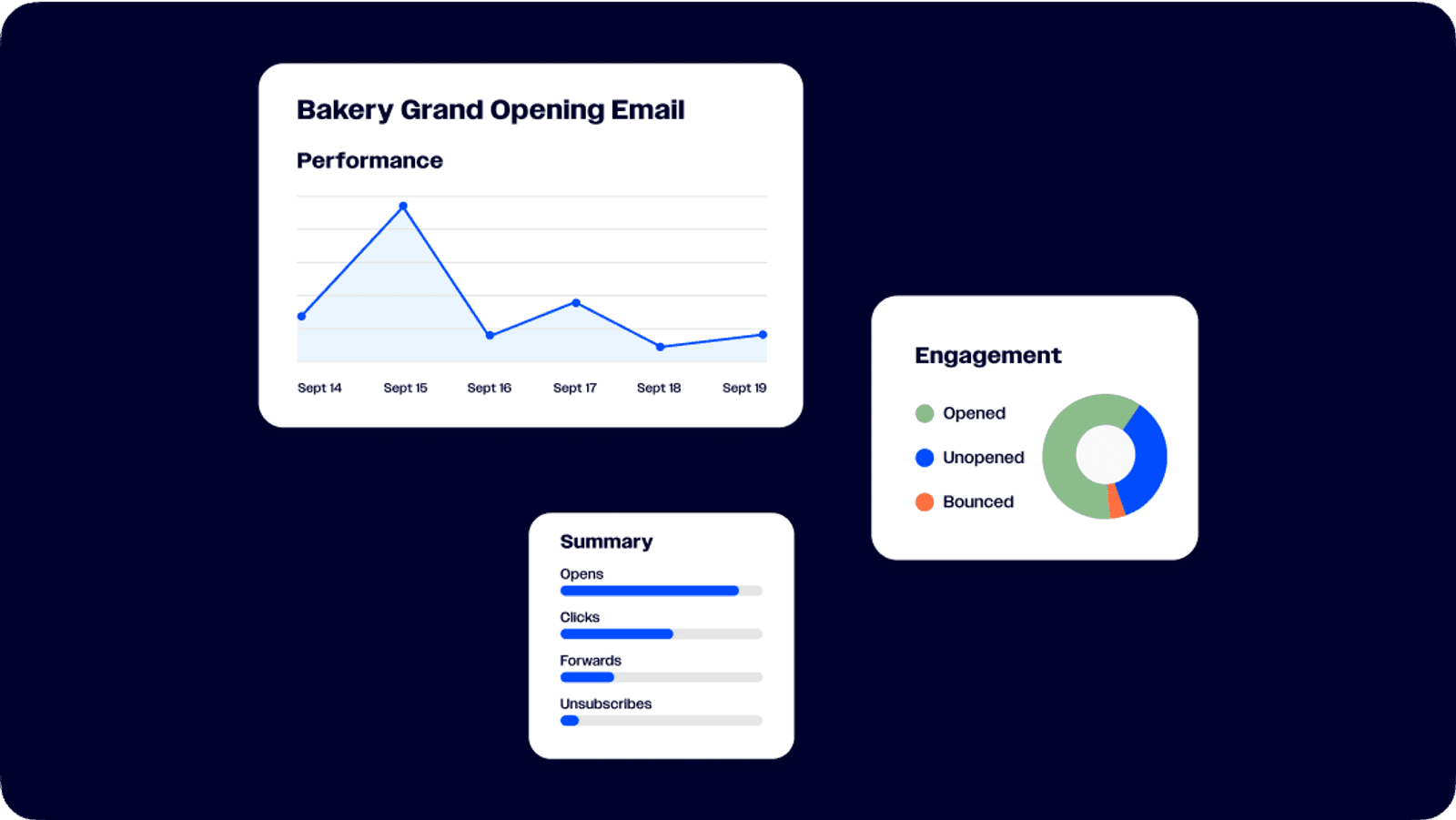
Using the wrong analytics tools might lead to leaving money on the table.
Popular marketing analytics tools
Google Analytics is one of the most widely used tools for tracking website traffic, user behavior, and conversions. It helps businesses understand how visitors interact with their site, providing insights into where traffic comes from and how users navigate different pages.
For more advanced tracking, Adobe Analytics offers deep customer journey insights and predictive analytics. This tool is particularly useful for enterprises that need to analyze complex data sets and customer interactions across multiple touchpoints.
If data visualization is a priority, Tableau allows marketers to turn raw data into interactive reports and dashboards. Its drag-and-drop functionality makes it easy to explore data trends and build reports that drive strategic decision-making.
While these platforms excel at reporting, they don’t always provide built-in automation to act on insights. This is where marketing automation platforms come in.
Choosing the right analytics platform (and why automation matters)
The right analytics tool should do more than just track data—it should help you act on it. Tools like Google Analytics, Adobe Analytics, and Tableau each have their strengths, whether it's tracking website performance, running predictive statistical models, or visualizing data trends. But these platforms often require additional tools to execute campaigns, which can lead to siloed workflows and inefficiencies.
That’s where automation-first platforms like ActiveCampaign stand out. By combining analytics and automation, ActiveCampaign lets you track performance across email, SMS, and ads in one place—and then automatically adjust workflows based on real-time data. This tight integration turns insights into action, without needing extra software or manual intervention.
For example:
A company running a multi-channel campaign across email and SMS can use ActiveCampaign’s reporting to track real-time engagement. If a lead clicks an email but doesn’t convert, the system can automatically trigger a follow-up message, ensuring timely, data-driven engagement.
4. Translate metrics into actionable insights
Understanding key metrics helps you spot opportunities, refine your approach, and improve marketing performance.
How to turn marketing metrics into action
Your marketing metrics aren’t just numbers—they’re clues. But to make real progress, you must know how to interpret and act on those clues.
- Email open rates: If your open rates are low, experiment with subject lines or test different send times to improve visibility.
- Click-through rates (CTR): Low CTR? Look at your calls to action and overall message clarity. Personalization based on user behavior can also help.
- Conversion rates: When people are engaging but not converting, investigate potential friction, such as poor mobile experience, complex forms, or weak incentives.
Once you’ve identified an issue, take a structured approach to optimization:
- Review performance trends and segment data for deeper insight.
- Test changes—like subject lines, design, or content—and refine based on results.
- Monitor progress consistently to ensure changes drive the right outcomes.
For example:
A company notices a drop in email conversions. By segmenting their audience, they realize mobile users have a significantly lower conversion rate. The solution? Optimizing email design for mobile, simplifying the CTA, and reducing unnecessary steps in the checkout process.
Why regular reporting matters
Reviewing your analytics isn’t a once-a-month task—it’s a feedback loop that should guide your entire strategy. Regular check-ins allow you to catch issues early, spot new opportunities, and stay agile.
To make reporting actionable:
- Set up automated reports to reduce manual work and keep stakeholders in the loop.
- Schedule periodic reviews (weekly, monthly, quarterly) to evaluate campaign performance.
- Use visual dashboards to track KPIs at a glance and keep sales and marketing teams aligned.
The more consistently you review and apply your insights, the more proactive and effective your marketing becomes.
5. Attribute revenue to marketing efforts
To prove ROI, you need to connect specific marketing activities to the sales they generate. This is where marketing attribution comes in.

A solid marketing report can help you determine where and when to spend your marketing budget.
Understanding marketing attribution
Marketing attribution is the process of identifying which touchpoints contribute to conversions. It helps you see what’s working and adjust your budget and strategy accordingly.
There are several common attribution models:
- First-touch attribution: Gives full credit to the first interaction a lead had with your brand (great for measuring brand awareness).
- Last-touch attribution: Attributes the sale to the final touchpoint before conversion (helpful in evaluating closing tactics).
- Multi-touch attribution: Spreads credit across all touchpoints (ideal for understanding the full customer journey).
Each model has pros and cons, and the right one depends on your business goals.
How to track attribution effectively
To accurately measure which channels drive conversions:
- Use UTM parameters: Add tracking codes to URLs to see exactly where traffic is coming from.
- Set up conversion tracking: Tools like Google Analytics and ActiveCampaign’s Marketing Revenue reports can tie leads back to their original source.
Monitor trends over time: Attribution isn’t just about one sale—it’s about understanding patterns in how customers interact with your marketing.
For example:
A brand running both Facebook ads and email campaigns notices that most customers engage with an ad but don’t convert until they receive an email. A multi-touch attribution model confirms this, leading them to invest more in email follow-ups to increase conversions.
When you understand which touchpoints influence conversions, you can confidently invest in what works—and avoid wasting budget on what doesn’t. That’s the power of attribution: it turns guesswork into informed, revenue-driven decisions.
6. Embrace continuous optimization and AI
The best marketing strategies are always evolving, using data-driven insights to refine messaging, adjust targeting, and enhance customer experiences.
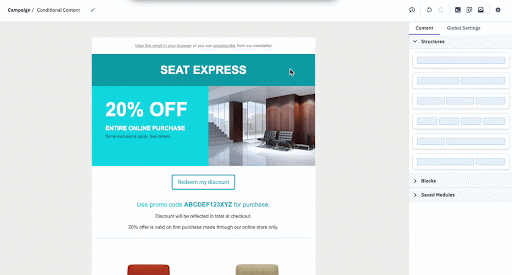
Conditional content based on segmentation in ActiveCampaign.
The power of ongoing testing and refinement
Successful marketers never stop testing. A/B testing and multivariate testing allow you to experiment with different subject lines, email layouts, ad creatives, and landing pages to see what resonates best with your audience. Similarly, behavioral data—like which content segments drive the most engagement—can help refine personalization strategies to improve conversion rates over time.
For example:
An ecommerce brand might test two versions of an abandoned cart email—one with a discount offer and another with urgency-based messaging. By analyzing the results, they can determine which approach drives more recoveries and refine future campaigns accordingly.
How AI enhances marketing analytics
Artificial intelligence and machine learning are transforming marketing analytics by predicting trends, surfacing insights, and automating decision-making.
Instead of manually sifting through reports, AI-powered tools can:
- Use predictive analytics to anticipate customer behavior and suggest next-best actions.
- Automate content personalization by tailoring emails and offers based on individual preferences.
- Optimize send times to increase engagement, ensuring messages arrive when recipients are most likely to open them.
AI-driven optimization in action
Platforms like ActiveCampaign use AI-powered features to turn data into action. With tools like predictive sending, marketers can automatically deliver emails at the optimal time for each subscriber. Features like conditional content allow brands to dynamically adjust email messaging based on user behavior, ensuring each recipient gets the most relevant experience.
Bringing marketing analytics into your strategy
From defining clear KPIs to leveraging AI for real-time insights, the right approach to analytics helps you optimize campaigns, allocate resources effectively, and drive better marketing results.
However, data is only useful if you can act on it. That’s where ActiveCampaign comes in.
With real-time reporting, revenue attribution, and advanced segmentation, ActiveCampaign gives you a complete view of your marketing performance—from email to automation and beyond.
- See the full picture: Monitor all marketing channels in one unified dashboard.
- Tie campaigns to revenue: Use Marketing Revenue reports to connect efforts to actual sales.
- Optimize with automation: Leverage AI-powered insights to improve personalization and engagement.
ActiveCampaign makes marketing analytics accessible and actionable, so you can spend less time deciphering data and more time driving results.
Marketing analytics FAQs
Let’s answer some of the most common questions about marketing analytics.
What are the key benefits of marketing analytics for small businesses?
Marketing analytics allows small businesses to make data-driven decisions without wasting limited resources.
By tracking key performance indicators (KPIs), you can:
- Identify which marketing channels generate the most leads and sales.
- Optimize ad spend and campaign budgets for the highest ROI.
- Understand customer behavior to create more targeted, effective marketing strategies.
Leveraging free or built-in analytics tools can help small businesses stay competitive and refine their marketing approach even with a small budget.
How can I get started with marketing analytics if I have limited resources?
You don’t need an enterprise-level budget to use marketing analytics effectively.
Start with:
- A free tool like Google Analytics for website insights and social media analytics dashboards for audience engagement data.
- Focusing on key metrics instead of trying to track everything—start with conversion rates, traffic sources, and engagement.
- Using marketing platforms with built-in analytics like ActiveCampaign to simplify data tracking without extra marketing analytics software.
As your business grows, you can expand to more advanced reporting and marketing automation strategy for deeper insights.
What are the most important metrics to track for measuring marketing ROI?
To understand whether your marketing efforts are paying off, track these essential ROI metrics:
- Customer acquisition cost (CAC): How much you spend to gain a new customer.
- Customer lifetime value (CLV): The total revenue a customer brings over their relationship with your brand.
- Return on ad spend (ROAS): How much revenue is generated for every dollar spent on advertising.
- Conversion rate: The percentage of users who take a desired action (e.g., purchasing or signing up for emails).
These metrics help determine which marketing strategies drive real revenue and where adjustments are needed.
How often should I review my marketing analytics data?
The frequency depends on your business size and marketing volume, but a good rule of thumb is:
- Weekly: Monitor short-term campaign performance, such as email engagement or ad click-through rates.
- Monthly: Assess overall trends in traffic, lead generation, and customer engagement.
- Quarterly: Perform deeper data analysis on conversion rates, revenue impact, and long-term marketing effectiveness.
For high-volume campaigns or real-time decision-making, consider using live dashboards like those in ActiveCampaign for instant performance tracking.



